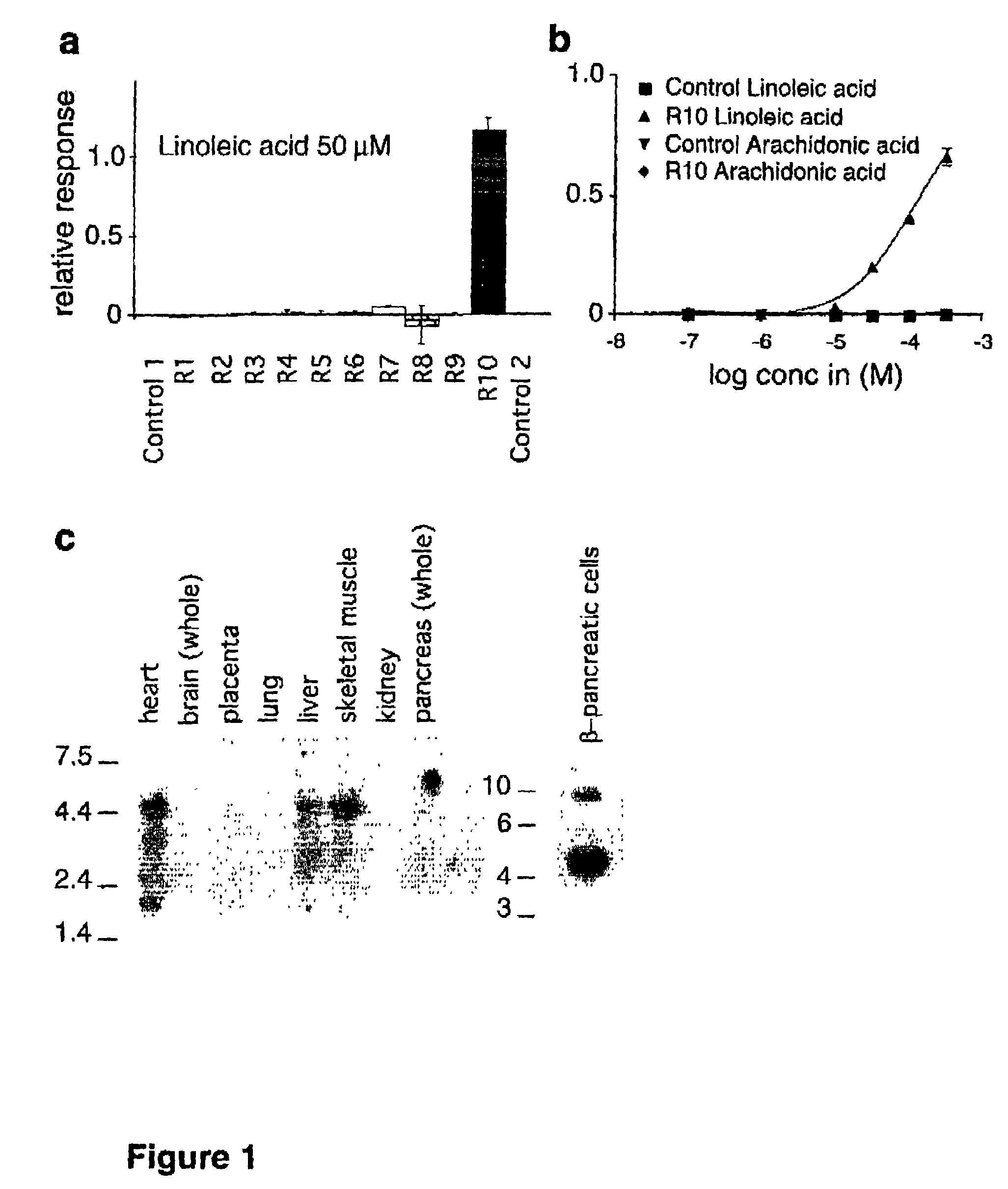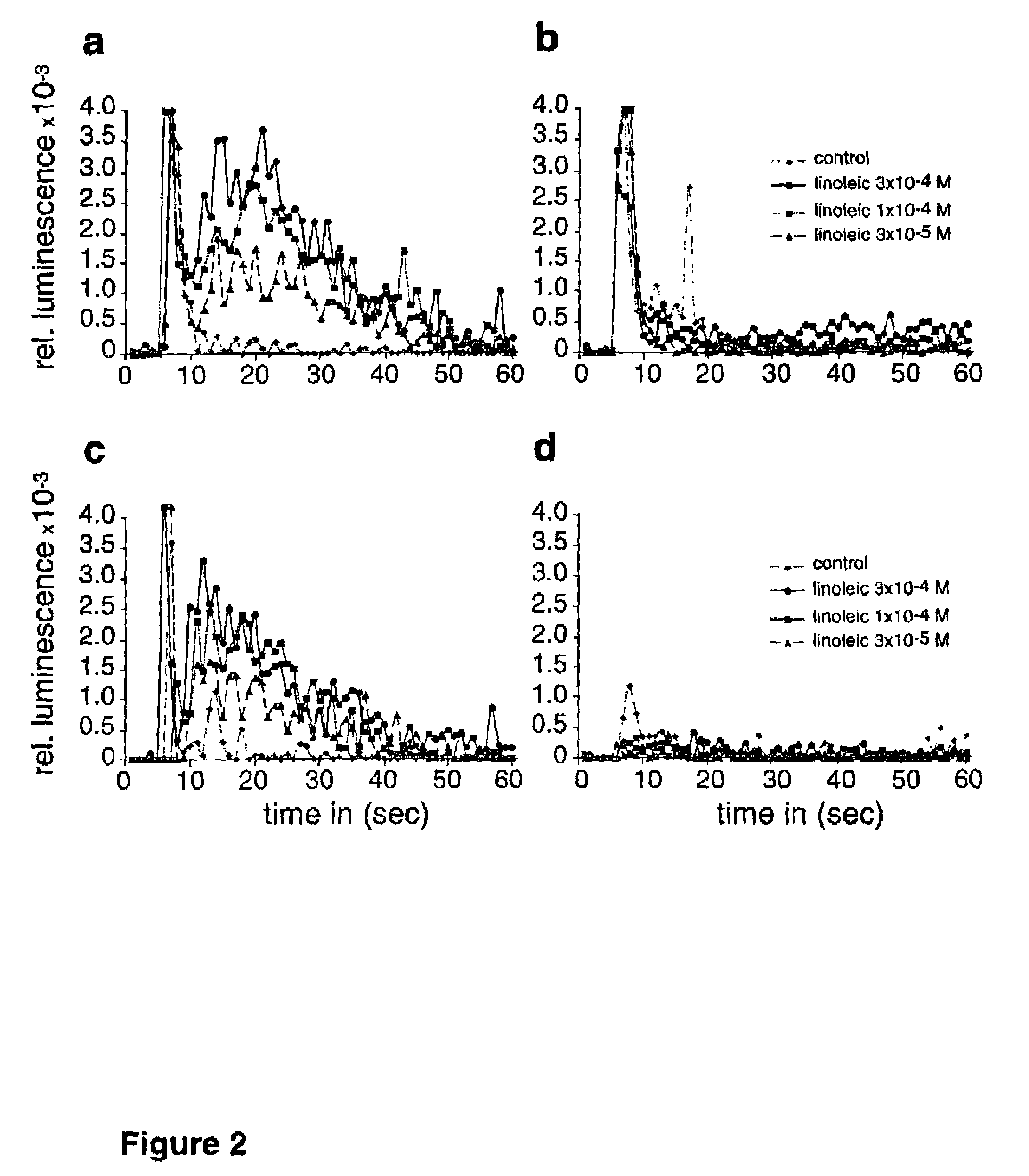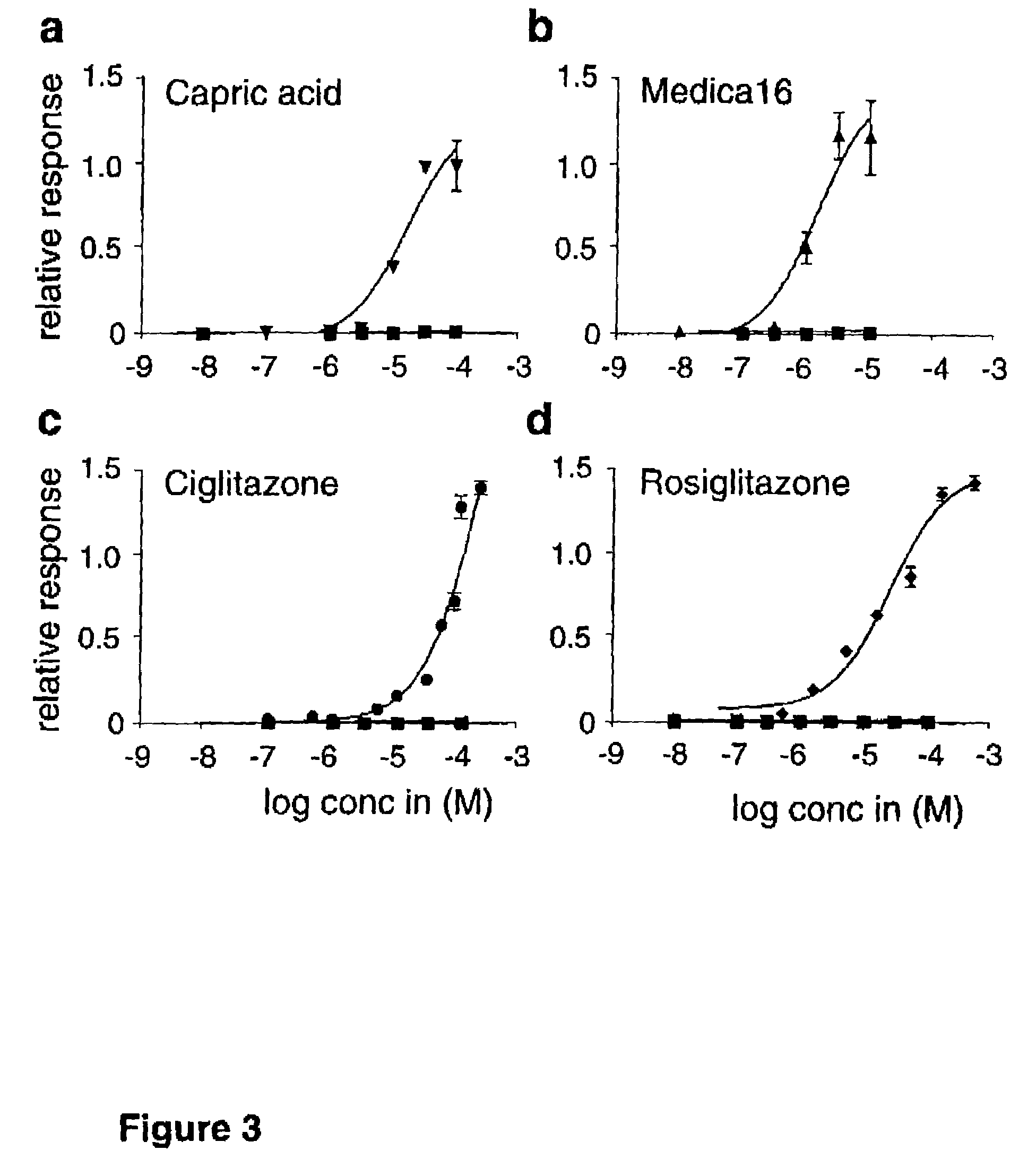Methods of identifying compounds that affect a fatty acid cell-surface receptor
- Summary
- Abstract
- Description
- Claims
- Application Information
AI Technical Summary
Benefits of technology
Problems solved by technology
Method used
Image
Examples
example 1
Materials and Methods
[0093]Cloning of the R10 / GPR40 ORF from human genomic DNA was performed by PCR using the following primers.
[0094]
forward:5′-GGCGGATCCACCATGGACCTGCCCCCGCAGCTCTCCTTCG-3′;(SEQ ID NO:3)reverse:5′-GGCGGATCCTTACTTCTGGGACTTGCCCCCTTGCGTT-3′.(SEQ ID NO:4)
[0095]PCR conditions were: 96 degrees C. for 3 min, 96 degrees C. for 45 sec; 57 degrees C. for 1 min; and 72 degrees C. for 1 min (30 cycles). The PCR product was restricted with BamHI, subcloned into the pIRESpuro vector (Clontech), and sequenced.
Cell Culture
[0096]HeLa, CHO, and MIN-6 cells were grown in Dulbecco's Modified Eagle's medium with Glutamax-I supplemented with 10% FBS, 0.5% streptomycin and penicillin at 37 degrees C. with 7% CO2, and split twice a week to the ratio of 1:10.
HFF11 Reporter Cells and Assay
[0097]Construction of the HFF11 reporter cell lines (successor of the previously described HeLa based cell line, HF1) expressing the orphan GPCRs studied was performed as earlier reported. (Co-pending...
example 2
Identification and Characterization of FFAR FFA Binding and Tissue Distribution
[0101]In the initial screening, reporter cell lines, with or without recombinant test receptors, were challenged with FFAs, such as AA and LA, at 50 mM. Ten cell lines expressing ten “orphan receptors” (one receptor per cell line) were screened. The expressed receptors were labeled R1-R10. The cell line expressing the candidate receptor R10, (previously designated GPR40, Accession number AF024687 in GenBank (Sawzdargo, M. et al., 1997)) gave a strong and reproducible response to LA, with a Z-factor (Zhang, et al., 1999) of 0.8. (FIG. 1a.) M had no effect on R10 (FIG. 1b) or any other test receptor, R1-R9 (data not shown).
[0102]Northern blot analysis of select human tissues revealed that the corresponding gene for R10 is expressed mainly in the liver, heart, and the skeletal muscle. The receptor is also expressed in pancreatic β-cell insulinoma. (FIG. 1c.)
[0103]Activation of receptor R10 by LA was confirme...
example 3
Activation of FFAR by Fatty Acid Derivatives
[0107]In addition to the essential FFAs, two substances of significant clinical interest were tested. 9-HODE (9-hydroxy,trans-10,cis-12-octadecanoic acid) is a hydroxy derivative of LA. It is a major component of oxo-LDL, associated with several aspects of arteriosclerosis. (Jira, et al., 1998). CLA (conjugated LA) is a group of LA derivatives, comprising two conjugated double bonds in different locations and chirality. They are dietary components with a spectrum of biological functions, including anticarcinogenic effects. (Pariza, et al., 2001.) Especially well studied is the 10-trans,12-cis CLA isomer which has been reported to increase fatty acid oxidation in 3T3 L1 preadipocytes and in HepG2 liver cells. (Pariza, et al., 2001.) As shown in Table 1, both 9-HODE and, to a lesser extent, 10-trans,12-cis CLA, activated FFAR.
[0108]The characteristics of tissue distribution of FFAR and the nature of the ligand spectrum prompted out investiga...
PUM
| Property | Measurement | Unit |
|---|---|---|
| Hydrophobicity | aaaaa | aaaaa |
Abstract
Description
Claims
Application Information
 Login to View More
Login to View More - R&D
- Intellectual Property
- Life Sciences
- Materials
- Tech Scout
- Unparalleled Data Quality
- Higher Quality Content
- 60% Fewer Hallucinations
Browse by: Latest US Patents, China's latest patents, Technical Efficacy Thesaurus, Application Domain, Technology Topic, Popular Technical Reports.
© 2025 PatSnap. All rights reserved.Legal|Privacy policy|Modern Slavery Act Transparency Statement|Sitemap|About US| Contact US: help@patsnap.com



